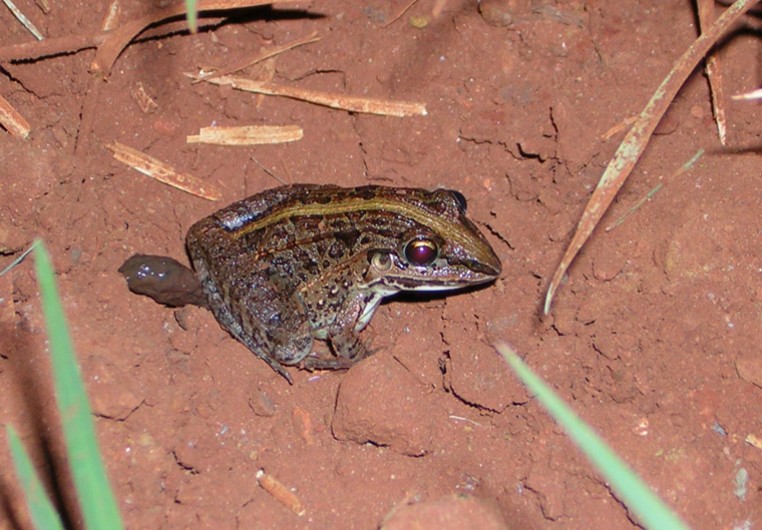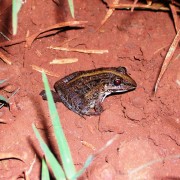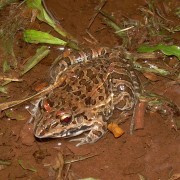Biodiversity
 Lineated Frog
Leptodactylus fuscus | Schneider, 1799
Lineated Frog
Leptodactylus fuscus | Schneider, 1799

Vocalization

Characteristics: Medium-size species measuring about 4.0cm in length. It has a pointed snout and the color of its back varies from grayish to shades of green, ornamented with irregular brown spots. A few individuals have one or two longitudinal stripes in the middle of their backs. The males are dark at the side of the neck area (pouch), whereas in females this area is white.
Distribution: Savannas from Panama throughout South America, east of the Andes, Bolivia, Argentina, and Trinidad and Tobago. In Brazil, it is distributed in the southern and southeastern regions.
Habitat: Formations open to forests, in edges and clearings in the riparian and gallery forests, and lake, creek, and swamp edges.
Habits: Crepuscular, nocturnal, terrestrial, and aquatic. This species prefers low vegetation (grass) near lakes, ponds, rivers, streams, wetlands, swamps and puddles. During the day, they burrow in cavities in the soil, while out of the vocalization season, in regions that undergo long periods of drought, they may overwinter buried at depths of up to 32cm.
Diet: Small insects and arthropods.
Breeding: Oviparous, and the reproductive period seems to be heavily influenced by rainfall in the areas where they occur. They vocalize from the ground, near temporary or permanent puddles or near the entrance of their burrows. The burrows are built by the males in places that will soon be flooded. Females are led to the burrow, where the embrace and spawning take place. Both males and females can remain in the nests to take care of the offspring.
UFRA: Species found in six of the ten environments, except in Exotic forests, Mixed forests in regeneration, Native forests and in Forests in spontaneous regeneration. Often associated with Wetlands with herbaceous plants.






